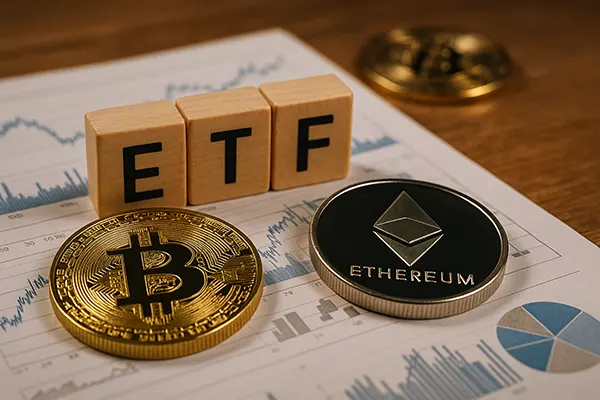
Cryptocurrency Comparisons
Cryptocurrency took the financial world like a whirlwind. Initially, there were questions about their survival. However, now these queries are replaced by notions such as its potential evolution. Financial pundits have already expressed their concerns about the rise of the new currency as a power player.
They seem concerned about the impact it is going to make on the financial landscape due to its extreme decentralization, volatility, and potential to be misused in activities such as money laundering.
Quite a few companies have banned the use of cryptocurrency. However, its mass adoption of many global giants such as Facebook, Microsoft, JPMorgan, Tesla, and Shopify has led to its rise in present days’ fiscal society.
Now, the big question arises which cryptocurrency is dominating the market in the present era? Therefore, after a careful cryptocurrency review, Xtrgatereview have compiled a list of top 10 cryptocurrencies in the current digital financial market.
Cryptocurrency review of Top 7 Cryptocurrencies
Remember, all the stats are of the currency value depict figures from Jan 2020. However, the rates may vary with constant changes in market caps.
1. Bitcoin
Bitcoin entered 2020 with the leading market cap of over $156.52 billion. Bitcoin first emerged in 2009 and became the first-ever cryptocurrency. It had remained at the forefront of digital currency since its origin a decade ago.
One of the significant changes that Bitcoin brought along was the removal of “middleman,” who once controlled the currency. Bitcoin introduced advanced blockchain technology to replace the middleman. Almost three-fourth of the entire Bitcoin cryptocurrency has been mined. It means the value of Bitcoin will become more predictable in the near future.
Basically, Bitcoin is a decentralized digital currency with no single administrator or central bank. It can be transferred from one user to the other, and all you need to do that is a peer-to-peer Bitcoin network. You do not need any intermediaries as well.
Bitcoin transactions verification happens through network nodes via cryptography. A public ledger known as blockchain records the transaction. Bitcoin creation occurs as a reward for a procedure known as mining. You can exchange Bitcoins for other currencies, services, and products.
According to research conducted by the University of Cambridge in 2017, the numbers of unique users for cryptocurrency wallet stand between 2.9 to 5.8 million, and the majority of them use Bitcoin as their preferred cryptocurrency.
Bitcoin has faced criticism for its use in an illegal transaction, price volatility, high electricity consumption, and theft from an exchange. Several Nobel Laureates, including many economists, have coined it to be a speculative bubble. Bitcoin has been used in the investment sector as well. However, various regulatory authorities have issued alerts for investors to be careful when carrying transactions in Bitcoin.
As a result of COVID-19 pandemic Kraken which is a cryptocurrency exchange experiencedan 83 percent increase in the amount of account sign up for Bitcoins during the week of March 11, 2020.
2. Ethereum (ETH)
Ethereum is the first alternative to Bitcoin on our list. It is basically a decentralized software platform which enables “Decentralized Applications” (DApps) and smart contracts to be run and built without fraud, downtime, interference or control from any third party whatsoever.
The applications on Ethereum run only on Ether, which is its own platform-specific cryptographic token. You can think of ether as a vehicle moving within the Ethereum platform. Most developers sought ether if they wish to run or develop applications inside Ethereum. Investors who are looking to make purchases of alternate currencies can also use Ether for this purpose.
Ether emerged in 2015 and is currently the second-largest cryptocurrency after Bitcoin by market cap. However, Ether lags behind Bitcoin by a significant margin in comparison. In January 2020, the market cap value of Ether stood at one-tenth of the size of Bitcoin’s market cap.
According to Ethereum, ether can come in handy to decentralize, codify, trade, and secure just about anything. Post DAO attack in 2016, Ethereum divided into two categories Ethereum Classic (ETC) and Ethereum (ETH). As of Jan 2020, ETH’s market cap stood at $15.6 billion, with $142.54 per token value.

3. Ripple (XRP)
Ripple represents a real-time worldwide settlement network. It offers certain, instant, and low-cost international transactions and payments. Ripple launches in 2012 and enabled banks to settle real-time cross border payments at lower costs, with complete end-to-end transparency.
Ripple method of comparison, which is also known as “consensus ledger,” is unique as it does not require the mining process like Bitcoin. In fact, all Ripple XRP tokens were pre-mined before its launch. It also means there is no more creating of XRP over the course of time. According to the network’s guidelines, there is only the introduction and removal of Ripple’s XRP from the market.
It is how Ripple XRP sets apart from all the other cryptocurrencies. Because Ripple XRP does not depend on mining, it minimizes network latency and also reduces the use of computing power. It has been a success so far with its business model.
Ripple also remains as the most enticing cryptocurrency amongst traditional financial organizations. It promises to revolutionize the future of cross-border payments. It stands at the third position in the world cryptocurrency review and market cap value. By Jan 8, 2020, its market cap stood at $9.2 billion with $0.21 per token value.
4. Litecoin (LTC)
It launched in 2011. Litecoin was amongst the very first cryptocurrencies following Bitcoin. It was also referred to as “silver to Bitcoin’s gold.” Its creator Charlie Lee was a graduate from MIT and also a former Google engineer. The basis of the Litecoin is an open-source global transaction and payment network which is not in control of any central authority. It uses “scrypt” as its proof of work, which is easily decoded via consumer-grade CPU.
Litecoin is somewhat similar to Bitcoin, however, with a faster generation rate, which results in faster transaction and confirmation time. Apart from the development, Litecoin is becoming a preferable choice of cryptocurrency by numerous merchants.
By Jan 2020, Litecoin stood with a market cap of $3.0 billion with per token value at #46.92. Currently, it is the sixth-largest cryptocurrency on the planet.
5. Tether (USDT)
Remember the group of “stablecoins”? – Tether was one of them and the most popular cryptocurrency with the aim to become equivalent to the market value of the normal currency to reduce its volatility. The reason was to avoid the tag of cryptocurrency because even the leaders, such as Bitcoins, did experience episodes of dramatic volatility.
Other stablecoins and Tether tried to smoothen out the fluctuation of their price to attract more and more cryptocurrency users by portraying a stable market cap, unlike other digital currencies.
Tether originated in 2014, and to-date describes itself to be a blockchain-enabled platform. It claims that its design facilitates the digital use of fiat currencies. This cryptocurrency effectively allows users to use blockchain technologies and networks for transactions in traditional currencies. However, it minimizes the complexity and volatility typically associated with cryptocurrencies.
As per cryptocurrency reviews in Jan 2020, Tether’s market cap stood at $4.6 billion with a $1.00 value per coin.
6. Bitcoin Cash (BCH)
This cryptocurrency holds a significant place in the altcoins’ history. After all, it is one of the most successful and earliest hardforks of Bitcoin. In the cryptocurrency domain, a fork occurs as the result of arguments and debates between miners and developers.
When different factions or stakeholders cannot come to a consensus, sometimes they decide to split the cryptocurrency into two branches. The original one remains true the original code, whereas other copy or branch begins its life as a new version of the same currency with a wholly changed code.
One such split happened with Bitcoin, and the BCH lifecycle began in 2017. Scalability was the issue that caused the split to happen, as the Bitcoin network follows a strict size limit on each block at one megabyte (1 MB). BCH increased the size of the block from one to eight MB. The idea behind this increase was simple that the large the block, the faster the transaction times maybe.
BCH also enforced other changes such as it removed the isolated witness protocol, impacting block space. According to cryptocurrency review in Jan 2020, the market value of BCH was at $4.4 billion, with a per token value of $240.80.
7. Monero (XMR)
Monero is a private, secure, and untraceable cryptocurrency. It is an open-sourced cryptocurrency that launched in April 2014, and its popularity quickly spiked the interests of cryptography enthusiasts and community.
This cryptocurrency’s development is entirely community-driven and donation based. Monero launched with a focus on scalability and decentralization, and it uses a unique technique known as “ring signature, which enables complete privacy.
This technique works as an incognito for the user because every user appears as a group of crypto signatures, and only one of them is the real use. Because all of them appear valid, it is hard for anyone to isolate the real user. It is due to this exception security feature that Monero has gained an unsavory reputation, linking it to the criminal operations globally.
Nonetheless, no matter if it is used for ill or for good, but Monero has introduced a crucial technological leap in the cryptocurrency arena. Cryptocurrency review of Monero in Jan 2020 saw its market cap at $994.0 million with per token value at $56.17
Future Predictions
After rigorous cryptocurrency review, many financial analysts claim significant changes to happen with cryptocurrency in the near future. There are chances that cryptocurrency might be floated on the NASDAQ, adding further credibility to blockchain and enabling it as a viable alternative to alter currencies.




